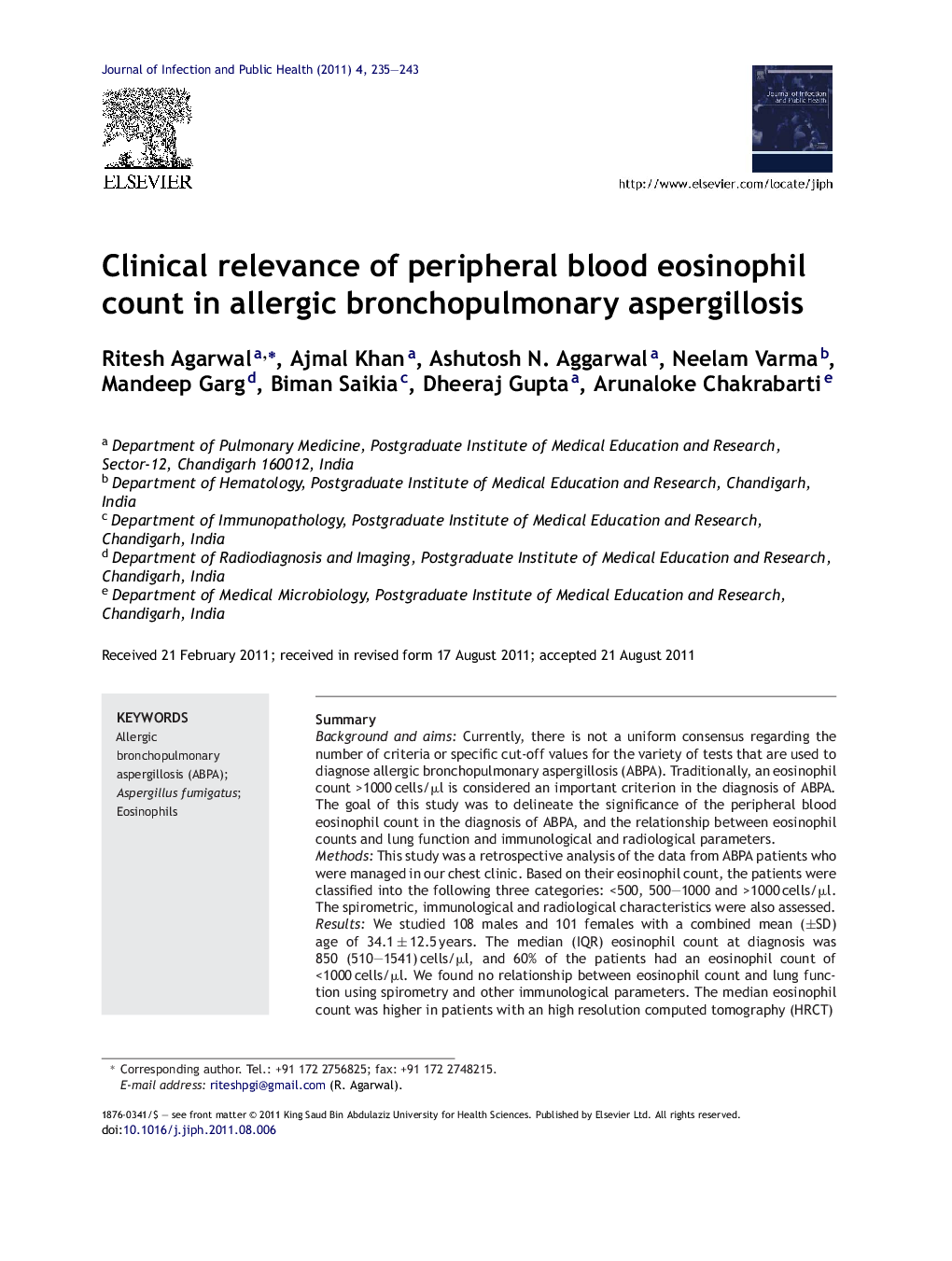| Article ID | Journal | Published Year | Pages | File Type |
|---|---|---|---|---|
| 3406290 | Journal of Infection and Public Health | 2011 | 9 Pages |
SummaryBackground and aimsCurrently, there is not a uniform consensus regarding the number of criteria or specific cut-off values for the variety of tests that are used to diagnose allergic bronchopulmonary aspergillosis (ABPA). Traditionally, an eosinophil count >1000 cells/μl is considered an important criterion in the diagnosis of ABPA. The goal of this study was to delineate the significance of the peripheral blood eosinophil count in the diagnosis of ABPA, and the relationship between eosinophil counts and lung function and immunological and radiological parameters.MethodsThis study was a retrospective analysis of the data from ABPA patients who were managed in our chest clinic. Based on their eosinophil count, the patients were classified into the following three categories: <500, 500–1000 and >1000 cells/μl. The spirometric, immunological and radiological characteristics were also assessed.ResultsWe studied 108 males and 101 females with a combined mean (±SD) age of 34.1 ± 12.5 years. The median (IQR) eosinophil count at diagnosis was 850 (510–1541) cells/μl, and 60% of the patients had an eosinophil count of <1000 cells/μl. We found no relationship between eosinophil count and lung function using spirometry and other immunological parameters. The median eosinophil count was higher in patients with an high resolution computed tomography (HRCT) chest finding of bronchiectasis (986 vs. 620, p < 0.001) vs. those without and in patients with high-attenuation mucus (1200 vs. 800, p < 0.001) compared to those without high-attenuation mucus.ConclusionsA peripheral blood eosinophil count has limited utility in the diagnosis of ABPA, and there is no relationship between eosinophil count and lung function or other immunological parameters. The higher eosinophil count that we observed in patients with central bronchiectasis or high-attenuation mucus suggests that eosinophils are primary mediators of inflammatory activity in ABPA.
